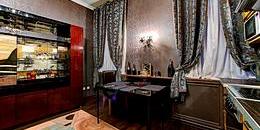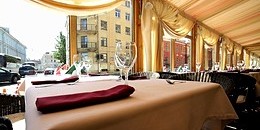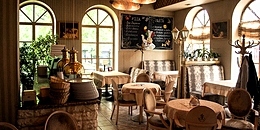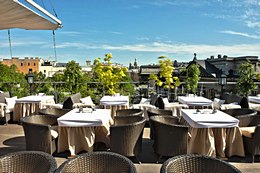Novo-Mikhailovsky Palace
The Novo-Milkhailovsky (New Michael) Palace was built in the middle of the 19th century for Grand Duke Mikhail Nikolaevich, son of Nicholas I. It is considered one of the greatest examples of architectural luxury in Petersburg. The palace is located on Palace Embankment (Dvortsovaya Naberezhnaya), the so-called "main street of palaces of St. Petersburg," and it was created by the tireless Petersburg palace architect Andrew Shtakenshneider. It was named Novo-Mikhailovsky Palace to distinguish it from the Mikhailovsky Palace on Ploschad Iskusstv (Arts Square).
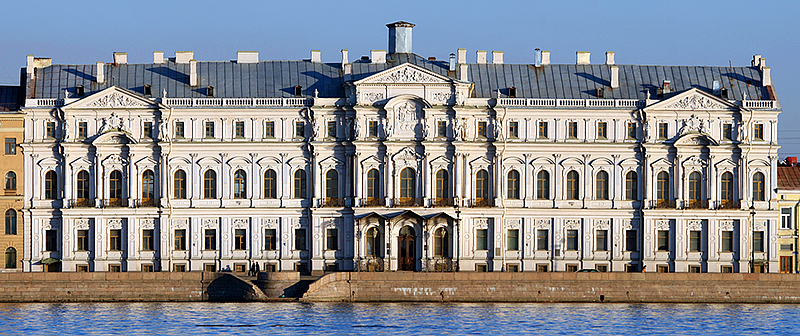
The New Mikhailovsky Palace stands on a plot of land which has endured a long history. Many famous and influential people of noble birth have lived in this area. At the beginning of the 18th century, the residence of Major Vasiliy Korchmin, the artillery engineer and confidant of Peter the Great after whom Vasilevskiy Island is purportedly named, was built by the architect Domenico Trezzini in the area between the Neva and Millionaya Ulitsa. After this, a three-story mansion in Italian Renaissance style was built in its place and belonged to Prince Cherkassky, the Chancellor of the Russian Empire. The mansion soon changed hands to Count Sheremetyev and was renamed "the Million House" because its main facade faced Millionnaya Ulitsa. In the beginning of 19th century, the building was handed over to the Department of Principalities and rebuilt to suit the needs of state agencies by architect Andrey Voronikhin. In 1830, the great Russian writer Nikolay Gogol served here.
From 1857 to 1861, the Department of Principalities building and almost all nearby homes were completely dismantled. In their place the new official residence of the family of the Grand Duke Mikhail Nikolaevich and Princess Cecilia Augusta Baden was built. Architect Andrey Stackenschneider skillfully transformed the inner walls of the original buildings located here to create a vast suite of state rooms. The main facade facing the Neva River was adorned with columns of Carrara marble and decorative terracotta sculptures by the Danish sculptor David Jensen. Metal girders and beams were used during the construction of the palace - an innovative technique at the time. The palace was also equipped with running water, and, in 1889, it was wired for electricity.
The luxurious interiors are just as impressive as its fine facades. The walls of the Grand Duke's are decorated with panels of walnut wood, and there is a beautiful hand-carved walnut fireplace. There is a swimming pool in the green marble room. The main lobby has granite columns and a grand marble staircase topped off with a succession of framed mirrors. An entire wall on the second floor landing is all glass and looks out over the winter garden. The walls of the dining room are covered with embossed leather and lined with carved oak. The Banquet Hall, the Green Hall and the Dancing Hall are richly decorated with stucco and gilding. Behind the main palace are the Shtalmeystersky Corpus, the Reserve Palace and the Stable yard.
After 1917, the Novo-Mikhailovsky Palace became the Petrograd branch of the Communist Academy. In 1930 the Institute of Oriental Studies was placed here. Currently, it houses the Institute of History of Material Culture, the Institute of Oriental Manuscripts, and the Institute of Electrophysics and Electric Power. Visiting the restored interiors of the palace is possible through organized tours.
| Address: | 18, Dvortsovaya Naberezhnaya |
|---|---|
| Metro: | Admiralteiskaya |
| Directions: | Exit Admiralteyskya metro station and turn left onto Nevsky Prospekt (turns into Dvortsovy Proezd). Turn right on Dvorsovaya Naberezhnaya (Palace Embankment). |
| What's nearby? | Neva River, Millionaya Ulitsa, Palace of Grand Duke Vladimir Alexandrovich / House of Scientists |






